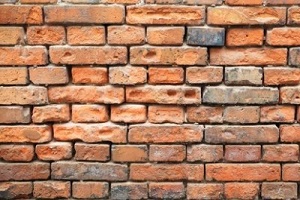Masonry is a notoriously sturdy material that can stand the test of time for decades if properly maintained. However, even the most competent commercial masonry installation will require minor repairs occasionally. Some of the most common masonry issues arise due to the climate and natural deterioration of the material.
Here are the best solutions to solve five of the most common commercial masonry problems and why they occur in the first place. Understanding their origins equips businesses with the knowledge they need to extend the life of their masonry and prevent damage for as long as possible.
Deterioration of Mortar
Perhaps the most common issue with commercial masonry is the gradual breakdown of its mortar. Mortar is the substance that holds bricks or stones together. It fills the gaps in between each piece, then hardens to a rock-like consistency to keep the masonry in place. However, mortar does more than just glue bricks together. It also ensures that the building’s weight is evenly distributed among all bricks.
When mortar begins to fail, the weight of the building will begin to unevenly bear down on the masonry. This can cause cracks or even areas where bricks fall out entirely. Deteriorated mortar should be replaced quickly in a process called repointing (or tuckpointing, depending on the building’s aesthetic needs). The mortar will be removed from the joint, after which new mortar is applied and allowed to cure. It may then be sealed depending on the climate.
Efflorescence
Efflorescence occurs when water that has penetrated masonry dissolves the salt within the material. Then, as the water evaporates, the salt is left behind. This can create white or crusted patches on masonry that are not only an eyesore but also threaten the structural integrity of the building.
These encrusted areas are no longer smooth, vertical surfaces, which allows for moisture to accumulate and wear down the brick beneath.
Efflorescence is not a permanent condition, and it can be treated by cleaning the area with a stiff brush. If the residual salts are not fully removed, a diluted solution of muriatic acid can assist. It is best to seal the masonry afterward to prevent this issue from occurring again.
Spalling
 Spalling is a masonry condition in which an area of brick has broken away from the main structure. This could present as an area in which some bricks jut out further than others, or it may appear that bricks have fallen out or chipped into pieces.
Spalling is a masonry condition in which an area of brick has broken away from the main structure. This could present as an area in which some bricks jut out further than others, or it may appear that bricks have fallen out or chipped into pieces.
Spalling often occurs in conjunction with mortar damage, which prevents proper weight distribution of the building. Once the softer interiors of the bricks are exposed, the rate of damage accelerates.
Spalling can be fixed by removing the affected bricks and replacing them with new materials. However, to ensure the issue does not happen again, the surrounding mortar will also need to be repaired. It is wise to seal the area to prevent further deterioration.
External Growths
Masonry is not typically a completely smooth material, which means that the many coarse surfaces provide ample opportunity for debris to cling and living organisms to grow. Mold and algae are a particular concern because they can break apart brick and stain the exterior of the building.
Biomaterials can be pressure washed off the masonry surface, or a cleaner and stiff bristled brush can be used. An expert can help your commercial facility determine if any fungicidal solutions are required to prevent recurrence.
Erosion of Sandstone
Sandstone is a visually appealing material for commercial masonry, but it must be carefully constructed in order to stand the test of time. The construction of mortar in sandstone buildings should be handled with care because, if it is not tucked adequately into the joints, moisture can pool and break apart the sandstone.
Adding more mortar at this point will only worsen the issue. To fix sandstone erosion, remove the damaged stones and fully replace the mortar in the area.
Do not attempt to patch; instead, completely remove existing mortar and start over. Then, install a hydrophobic sealer to prevent water from penetrating the area again. Otherwise, the problem will likely return.
Trust Your Masonry Repair to Experienced Professionals
Masonry can last for a long time, but repairs to commercial masonry should be a regular part of any facility’s maintenance plan. Issues such as spalling can be dangerous to fix without the help of an expert who understands how to prevent the area from collapsing.
The experts at Waterproof Caulking & Restoration can identify problematic areas on your commercial property and explain your options for addressing these issues. Contact our team to learn more about the variety of problems we can fix or to schedule an appointment to talk with an expert.
